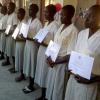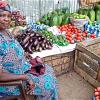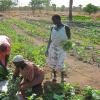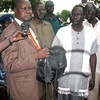Rumbek recalls its role in South Sudan’s independence
It was from Torit in South Sudan, that the fight for freedom gained momentum, playing a key role in the Sudan People’s Liberation Army SPLA/SPLM movement and the country’s eventual independence.
The struggle unleashed widespread death and bloodshed, killing 2.5 million people and leaving hundreds of thousand people disabled. More than 4 million people were driven way from their homes by the fighting.
Many in Rumbek town, in Lakes State, were among those who died or were injured during the fighting, but they continued to struggle for freedom, fuelled by their conviction.
We were not paid to fight, rather we sacrificed our lives so that other generations could be free from oppression‚” said Martin Malual-Buthokleec, who lost a leg in the struggle for independence.
More than 8,000 SPLA soldiers and officers from Rumbek were killed during fighting and more than 2,700 were wounded, said Malual-Buthokleec who now works as director for civic education in Rumbek.
For many international observers, it was unimaginable that the SPLA/SPLM would achieve an independent state. But Malual-Buthokleec credited the people of Rumbek for enabling South Sudan to secure autonomy. He described the people of Lakes State as brave, adding that it was the only place where soldiers never rebelled against the SPLA movement.
Part of its key role in the path towards independence was due to the central Sudanese town’s history. In 1948, a secondary school was opened by the British government. A side effect of the new institution was the political organisation of South Sudanese people to fight the northern government.
Former SPLA leader Dr. Garang and many of South Sudan’s current generation of leaders graduated from the school, which instilled in them a sense of nationalism and the will to fight for liberation.
The SPLA/SPLM organised a congress at Pacong Payam forest from 1999 to 2000, designed to address its pressing challenges and to strategise on how to defeat Sudanese government troops in South Sudan. At this congress Dr. Garang De Mabior named Rumbek as the town which would support the SPLA/SPLM as an administrative and strategy centre.
Then, in 2002, the SPLA/SPLM called a meeting of senior officers in Rumbek, attended by commander in chief Dr. Garang. On the agenda were themes such as their fighting strategy and also plans for peace negotiations.
Their focused gaze on liberation was diverted by a leadership struggle with in the SPLA/SPLM in 2004 and 2005, with a deep rift between Dr. Garang De Mabior and South Sudan’s current president Salva Kiir Mayardit.
The people of Rumbek, however, managed to ease the dispute: They persuaded both Dr. Garang and Salva Kiir to put aside their differences.
The subsequent reconciliation conference was organised by Rumbek and soon afterwards the comprehensive peace agreement was signed in 2005.
And now, as South Sudan recalled its first year of independence, locals are proud to recall their role in the struggle.
The struggle left me disabled but I am happy to use crutches to witness the July 9 independence celebrations,” said Malual-Buthokleec. We sacrificed lives for the liberty and freedom of all South Sudanese people.”





